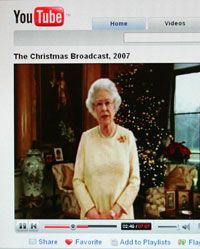The evolution of dance. Hundreds of Filipino inmates showing off a perfect performance of Michael Jackson's choreography for the "Thriller" video. An anguished defense of Britney Spears. What do all of these have in common? Although each is directly or indirectly related to dancing, the main thread that holds them together is the popular video-sharing Web site YouTube.com.
Since its beginnings in 2005, YouTube has undergone an immense rise in popularity. More than 100 million videos stream into office cubicles, coffee shops and college dorm rooms every day [source: Wired].
Advertisement
People aren't just watching the videos like crazy -- they're uploading like crazy, too. Whether it's personal video blogs (vlogs), do-it-yourself covers of popular songs or 30 seconds of a sleeping cat, YouTube has tapped into our desires to be seen and heard.
And some people are seen and heard to a huge degree. The video Judson Laipply posted called "The Evolution of Dance" has received more than 81 million views as of April 2008 and is the most viewed video on YouTube. A baby giggling for more than a minute and a half has received more than 44 million views. Lital Mizel and Adi Frimmerman, two 22-year-olds from Israel, recorded themselves lip-syncing to a Pixies song and posted the video on YouTube. The three-minute clip received more than 10 million views. But how did these people get on the site in the first place?
Compared to all the bits, bytes and fussy code that make up the Internet, sharing videos on YouTube is a walk in the park. If the numbers say anything, adding a video onto the site should be fairly easy -- users upload more than 65,000 videos onto the site each day. Think about that: According to the digital monitoring firm comScore, the average YouTube video is about three minutes long [source: Financial Post]. That means there are nearly 2,200 hours, or 90 entire days, worth of video popping up each day.
So how do you broadcast yourself, as YouTube's slogan suggests? Read on to find out.
Advertisement




